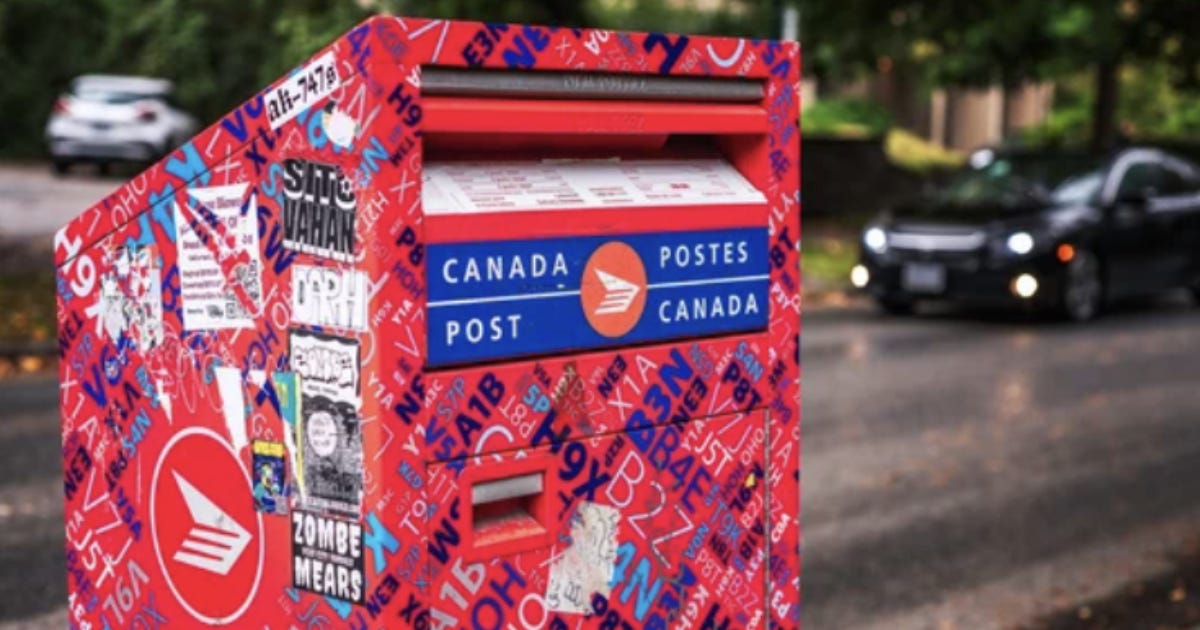Taxpayers group calls to privatize Canada Post as Ottawa seeks overhaul
The Canadian Taxpayers Federation is calling for the sale of Canada Post after the government unveiled reforms Thursday to end what Minister Joël Lightbound calls an “existential crisis."
The Canadian Taxpayers Federation is calling for the sale of Canada Post after the federal government unveiled sweeping reforms Thursday aimed at ending what Minister of Government Transformation, Public Works and Procurement Joël Lightbound calls an “existential crisis” at the Crown corporation.
“Canada Post is effectively insolvent,” Lightbound said at a news conference. “It provides an essential service to Canadians … but repeated bailouts from the federal government are not the solution.”
Lightbound laid out the scale of the problem: more than $5 billion in losses since 2018, including a $1.3-billion deficit in 2024 and $407 million lost in the second quarter of 2025 alone — the corporation’s worst quarter ever.
“At present, the corporation is losing $10 million every day,” he said.
Letter mail has plunged from 5.5 billion pieces two decades ago to about two billion today, even as the number of Canadian addresses has grown. Parcels once offered the corporation fiscal hope, but Canada Post’s share of that market has fallen from 62 per cent in 2019 to less than 24 per cent today, Lightbound noted.
Acting on the recommendations of an Industrial Inquiry Commission led by William Kaplan in May, the minister said the government will lift the 1994 moratorium that has protected nearly 4,000 rural post offices from closure.
He directed Canada Post to return within 45 days with a plan to “ensure protection of service in rural, remote and Indigenous communities,” even as the corporation gains flexibility to close or consolidate sites in areas that have become suburban or urban.
About four million addresses that still receive door-to-door delivery will be converted to community mailboxes over the next nine years, most within four. Delivering to a single address costs the corporation $279 a year compared with $157 for a community box, a change Lightbound said will save nearly $400 million annually.
Canada Post will also be allowed to shift non-urgent mail to ground transportation instead of air, stretching delivery times but saving about $20 million a year. Lightbound added that the corporation will no longer be required to visit every address five days a week, allowing delivery “based on volume.”
The government will review how stamp prices are set to allow quicker increases and is asking Canada Post to find further efficiencies across the organization.
“They must look at management with a cold hard look,” Lightbound said, adding that while he set no numerical target, taxpayers “cannot go on footing the bill year after year.”
Lightbound urged Canada Post and the Canadian Union of Postal Workers to return to the bargaining table, saying he hopes the announcement “will allow both management and the union to work toward a viable future.”
He said workforce reductions should occur mainly through attrition, but left decisions on potential layoffs to Canada Post management.
But taxpayer advocates are saying change isn’t enough.
“The government should not be bailing out failing Crown corporations like Canada Post,” said Franco Terrazzano, federal director of the Canadian Taxpayers Federation.
“The government gave Canada Post a $1-billion bailout, and all members of Parliament must demand Canada Post pay that money back ASAP. If Canada Post doesn’t pay every cent back, MPs should ask a simple question every day in the House of Commons: Who is getting fired? Most importantly, MPs should push for the real solution: Sell Canada Post.”
However, Lightbound advocated for saving the national institution.
“This is about saving Canada Post, making sure it has a viable future,” Lightbound said. “Canadians cannot keep paying the bill for $10 million a day in losses. Today, we begin the transformation needed to protect this national institution for generations to come.”




It is the model of the Federal Government.
These days typified by the Liberals but far from unique.
It's also a huge problem and as can be seen the mantra of "The Bureaucrat".
.... That mantra ...
IF IT'S FAILING THROW MORE MONEY AT IT.
IF IT CONTINUES TO FAIL ..
THROW EVEN MORE MONEY AT IT AND PRETEND TO REORGANIZE THE ABJECT FAILURE.
Canada Post cannot reasonably pay back the $1.0 billion, that is a stupid demand.
Mail delivery is still a necessary service. Privatization is not the answer, service would suffer.
Community mail boxes are the best answer.
There are far worse performing government departments like CRA, Treasury, Environment, etc. that provide much less value.